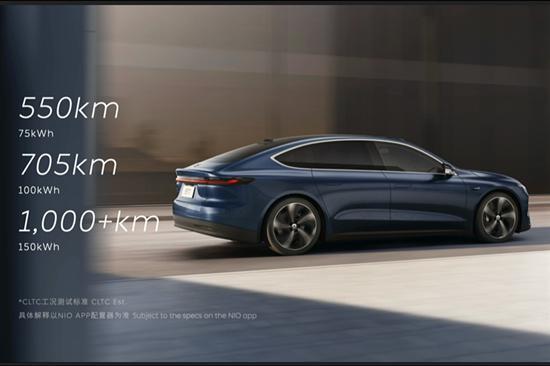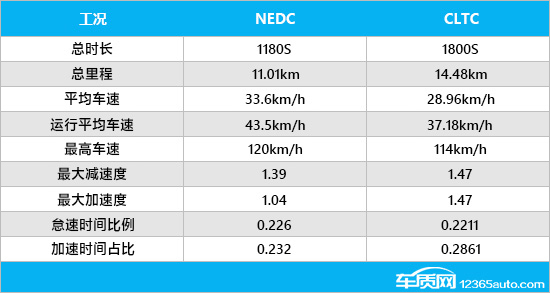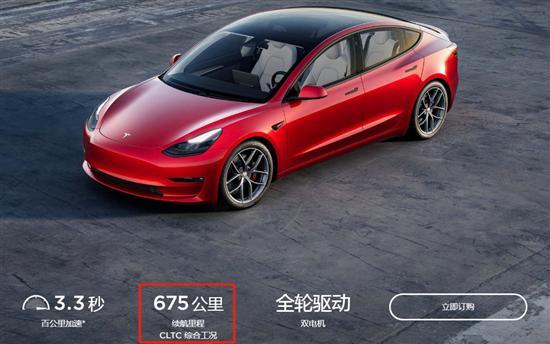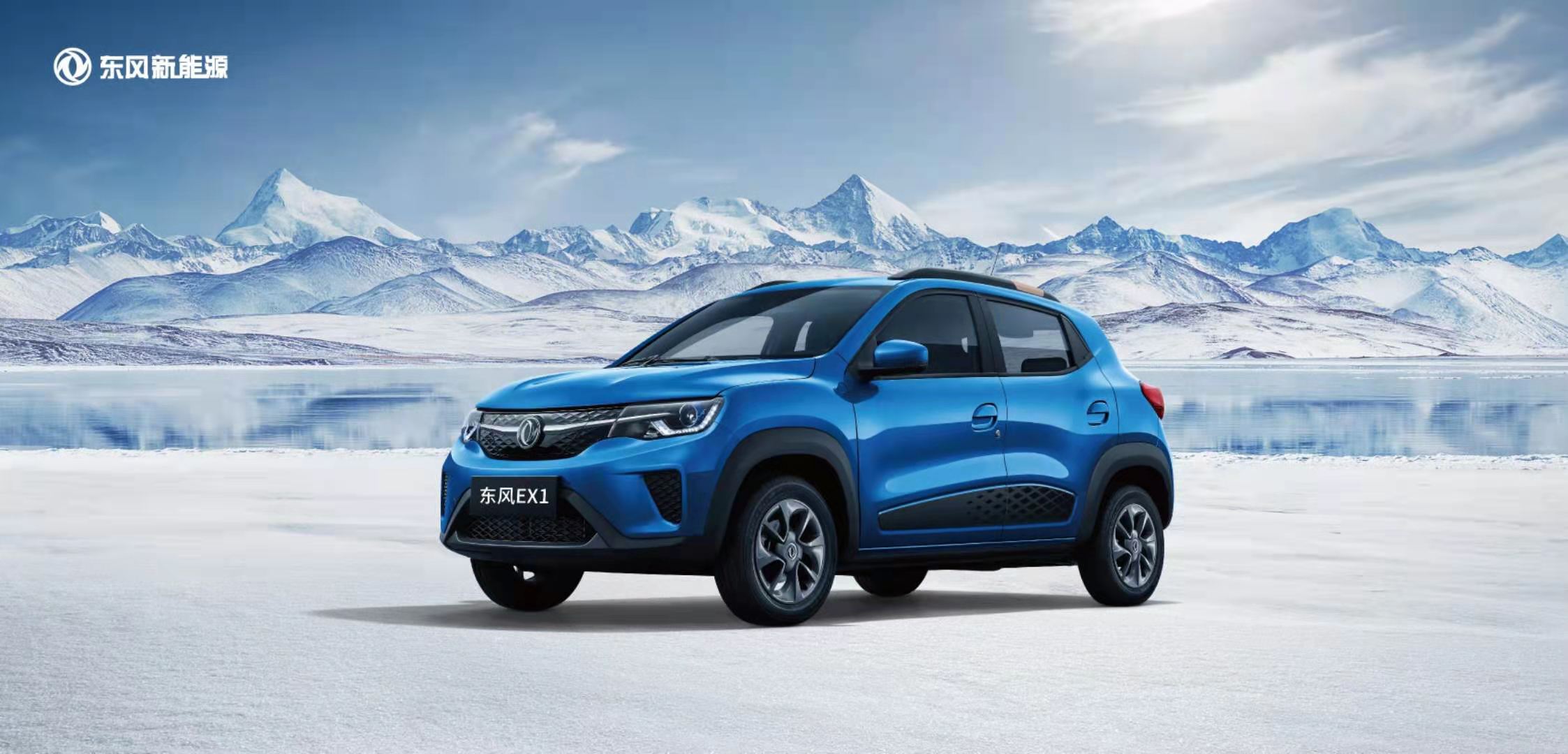俊风关注:CLTC对比NEDC 谁更贴近真实续航?
纯电动汽车已经在国内汽车市场征战多年,产品力的不断完善已经得到了越来越多消费者的认可。不过大家在选择纯电动车时,最关心的依旧是续航里程的问题。一直以来,纯电动车的额定续航里程都用“NEDC”工况进行表示,而现在使用“CLTC”测定的续航里程越来越流行,那这两种测定工况有什么区别呢?到底哪个更贴近真实的续航里程?
1、NEDC工况的测定标准
在此之前,国内纯电新能源车几乎全部都使用“NEDC”宣传车辆的续航里程。其实,NEDC是“新欧洲驾驶周期”的缩写,它是欧洲制定的一套汽车能耗测试标准,之前国内绝大部分纯电动车都用这种标准进行车辆续航里程的测试。
2、CLTC工况的测定标准

事实上,国内相关部门很早之前就发现了用NEDC标准作为新能源车续航里程的测定标准存在诸多漏洞,所以在2015年4月,工信部就已经在着手策划新的工况续航标准,该项目由中汽研牵头,组织业内专家进行了为期三年的调研开发工作,并于2019年10月25日正式发布了“中国汽车行驶工况”标准,这一工况标准简称为“CATC”,也就是我们熟悉的——CLTC,它属于其中一部分的测试内容。
CLTC测试标准从2021年10月1日起正式实施,相较于NEDC,CLTC的测试里程增加到14.48km,其中包括低速、中速和高速三种工况,分别对应日常城市驾驶、郊区行驶和高速行驶三种路段。

如图所示,CLTC测试标准总时长为1800秒,其中,低速工况674秒,中速工况693秒,高速工况433秒。而在模拟高速路段测试时,最高时速为114km/h,整体所有路段测试的平均速度为28.96km/h。从数据对照不难发现,CLTC工况下测试的速度区间跨度更大,这样也是为了更好地模拟我们日常驾驶车辆等灯、起步的过程,所以相比于NEDC,CLTC更符合国内实际道路驾驶情况。
3、为什么使用CLTC工况测定续航里程反而更长了?

CLTC标准测定的续航里程更加贴近实际续航里程,所以CLTC相比于NEDC理论上测定的续航里程应该更短才是,那为什么有些车型换了CLTC工况标定之后,续航里程反而变长了呢。例如:东风俊风EX1在对三电系统未做任何改动的情况下,换用了CLTC标定后,续航里程从之前的301km变成了330km,续航里程增加了30km,这又是为何呢?
其实,电动车和燃油车不同,燃油在高速路况下行驶最省油,但是在走走停停的市区道路上行驶反而费油。而纯电动车则恰恰相反,市区这种走走停停并不会出现和燃油车相同的情况。反而行驶的速度越高,越费电,尤其是当时速超过120km/h后,续航里程往往会以肉眼可见的速度往下掉。而在CLTC测试标准下,最高行驶速度由之前的120km/h降低至114km/h,这也就说明了CLTC相比于NEDC更加偏向于中低速的表现。除此之外,CLTC测试工况下需要频繁的加速和减速,这时候对于动能回收效率较高的车辆来说非常有利,所以这也就不难解释特斯拉Model 3在CLTC工况下续航里程会增加的问题了。
总结:
国内纯电动汽车产品正式启用CLTC标准之后,很多车型的续航里程标定都增加了,这其中获利最大的莫过于车企,相当于额外免费的广告。不过在此我依旧要提醒广大消费者,我们在选购纯电动车型时,一定要了解车企宣传的续航里程到底是哪种标定方式。另外,我们还要通过查询了解其他车主实际真实续航里程是多少,心里要有个算盘,衡量之后再决定是否要购买。还有,购买纯电动车型一定要根据实际情况而来,如果你经常用来跑长途,记得一定要优先选择续航里程长的车型。

Who is closer to the real battery life between CLTC and NEDC?
Pure electric vehicles have been in the domestic auto market for many years, and the continuous improvement of product strength has been recognized by more and more consumers. However, when choosing a pure electric vehicle, the main concern is still the cruising range. For a long time, the rated cruising range of pure electric vehicles is represented by the NEDC condition, and now the cruising range measured by CLTC is becoming more and more popular. What is the difference between these two measurement conditions? Which one is closer to the real cruising range?
1. Determination standard of NEDC working condition
Prior to this, almost all domestic pure electric new energy vehicles used NEDC to promote the cruising range of the vehicle. In fact, NEDC is the abbreviation of New European Driving Cycle. It is a set of vehicle energy consumption test standards formulated by Europe. Most of the domestic pure electric vehicles used this standard to test the vehicle cruising range.
2. Determination standard of CLTC working condition
In fact, the relevant domestic departments have discovered many loopholes in the use of the NEDC standard as the standard for measuring the cruising range of new energy vehicles. Therefore, in April 2015, the Ministry of Industry and Information Technology was already planning new operating conditions. Led by China Automotive Industry Research Institute, it organized industry experts to conduct a three-year research and development work, and officially released the China Automobile Driving Conditions standard on October 25, 2019, which is referred to as CATC for short. That is what we are familiar with - CLTC, which is part of the test content.
The CLTC test standard will be officially implemented from October 1, 2021. Compared with NEDC, the test mileage of CLTC has increased to 14.48km, including low-speed, medium-speed and high-speed conditions, corresponding to daily urban driving, suburban driving and Three sections of high-speed driving.
As shown in the figure, the total duration of the CLTC test standard is 1800 seconds, of which 674 seconds in low-speed conditions, 693 seconds in medium-speed conditions, and 433 seconds in high-speed conditions. In the simulated high-speed road test, the maximum speed is 114km/h, and the average speed of all road tests is 28.96km/h. From the data comparison, it is not difficult to find that the speed range tested under CLTC conditions is wider, which is also to better simulate the process of our daily driving vehicles such as lights and starting. Therefore, compared with NEDC, CLTC is more in line with domestic actual road driving. Happening.
3. Why is the cruising range measured using CLTC working conditions longer?
The cruising range measured by the CLTC standard is closer to the actual cruising range, so the cruising range measured by CLTC should be shorter than that measured by NEDC. For example: Dongfeng Junfeng EX1 changed to CLTC calibration without making any changes to the three-electric system, the cruising range has changed from the previous 301km to 330km, and the cruising range has increased by 30km, why is this?
In fact, electric vehicles are different from fuel vehicles. Fuel is the most fuel-efficient to drive on high-speed roads, but driving on stop-and-go urban roads consumes fuel. On the other hand, pure electric vehicles are just the opposite. Stop-and-go in urban areas does not have the same situation as gasoline vehicles. On the contrary, the higher the driving speed, the more electricity is consumed, especially when the current speed exceeds 120km/h, the cruising range tends to drop at a speed visible to the naked eye. Under the CLTC test standard, the maximum driving speed has been reduced from the previous 120km/h to 114km/h, which also shows that CLTC is more inclined to the performance of medium and low speed than NEDC. In addition, frequent acceleration and deceleration are required under CLTC test conditions, which is very beneficial for vehicles with high kinetic energy recovery efficiency, so it is not difficult to explain the battery life of Tesla Model 3 under CLTC conditions Mileage will increase the problem.
Summarize:
After the domestic pure electric vehicle products officially use the CLTC standard, the cruising range calibration of many models has increased. Among them, the most profitable is the car company, which is equivalent to additional free advertising. However, I still want to remind consumers that when we buy pure electric models, we must understand what kind of calibration method the cruising range advertised by car companies is. In addition, we also need to know the actual cruising range of other car owners through inquiries. We must have an abacus in our hearts, and then decide whether to buy or not. In addition, the purchase of pure electric models must be based on the actual situation. If you often use it for long-distance running, remember to give priority to the models with long cruising range.

